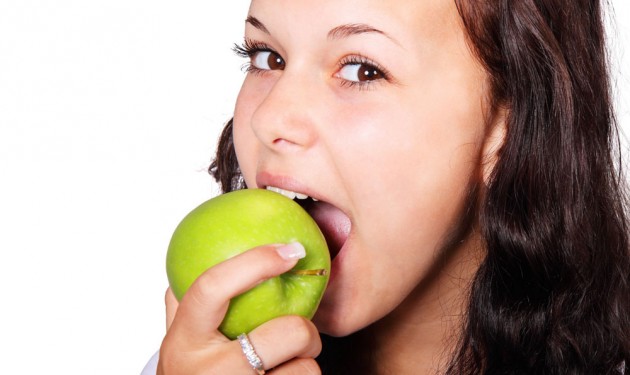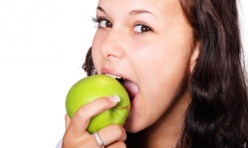For the tech conscious amongst us who count calories of what they eat, image recognition to count calories is so passe.
Researchers at the University of Buffalo, have created an AutoDietary wearable device that deciphers the calorie count of what you are eating depending on the sounds that you are making. Their AutoDietary device listens to the sounds that you make while chewing and swallowing different kinds of food.
For example, the sounds that you make while crunching an apple differs from that of a cookie – right? Their AutoDietary device, in the form of a necklace, can detect that and sends the data to an app in your smartphone which then provides recommendations for cutting back or improving on your snacking and dietary needs. It can even tell you to slow down, if you rush through your dinner.
The current model isn’t foolproof, yet. The existing implementation can correctly detect the food that you are consuming by 85%. It can’t detect yet whether the food that you are consuming is a ‘junkiefied’ version or a healthy version, a common problem with cereals.
Researchers believe they can surmount this obstacle by adding a biomonitor to the device which will monitor blood sugar levels and other meal specific telltale signs.
This technology has the latent potential to revolutionize the management of healthcare, including obesity, diabetes and related conditions.
Researchers at the University of Buffalo, have created an AutoDietary wearable device that deciphers the calorie count of what you are eating depending on the sounds that you are making. Their AutoDietary device listens to the sounds that you make while chewing and swallowing different kinds of food.
For example, the sounds that you make while crunching an apple differs from that of a cookie – right? Their AutoDietary device, in the form of a necklace, can detect that and sends the data to an app in your smartphone which then provides recommendations for cutting back or improving on your snacking and dietary needs. It can even tell you to slow down, if you rush through your dinner.
The current model isn’t foolproof, yet. The existing implementation can correctly detect the food that you are consuming by 85%. It can’t detect yet whether the food that you are consuming is a ‘junkiefied’ version or a healthy version, a common problem with cereals.
Researchers believe they can surmount this obstacle by adding a biomonitor to the device which will monitor blood sugar levels and other meal specific telltale signs.
This technology has the latent potential to revolutionize the management of healthcare, including obesity, diabetes and related conditions.















